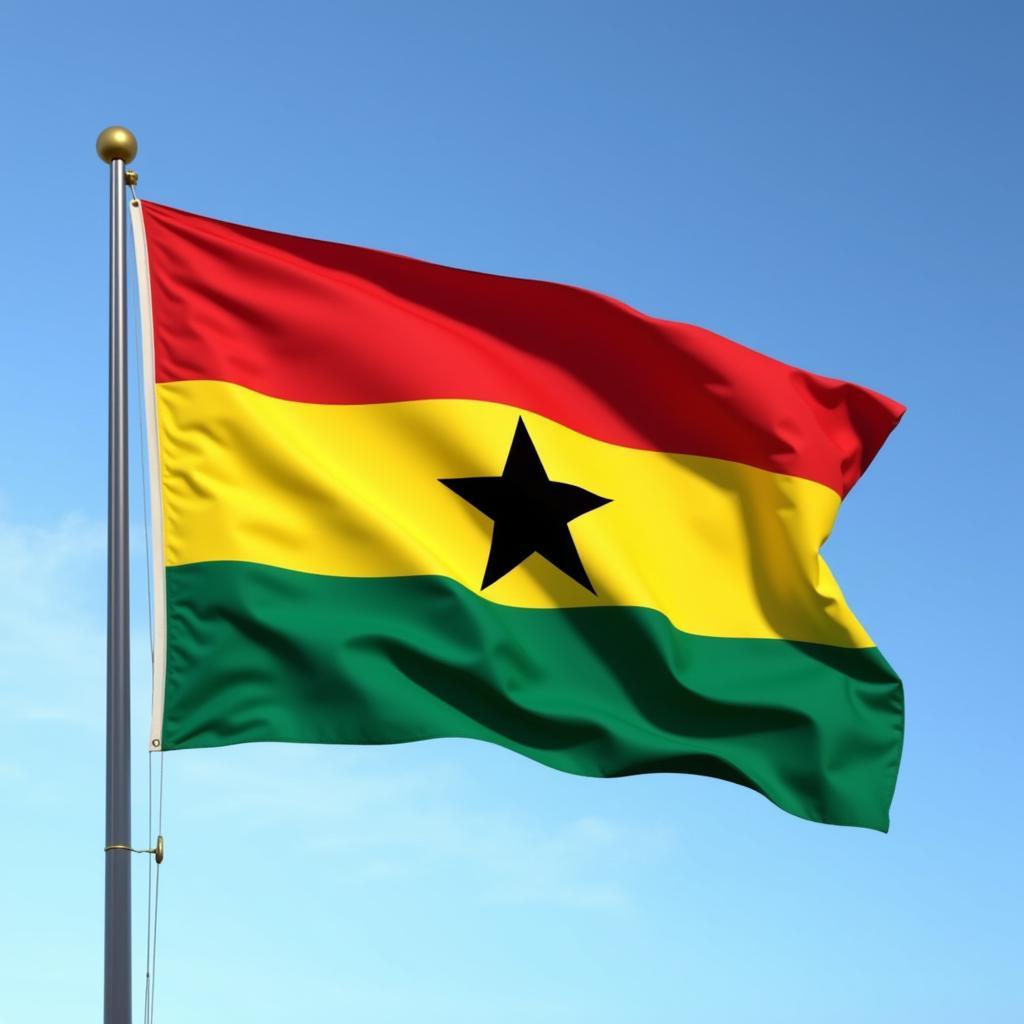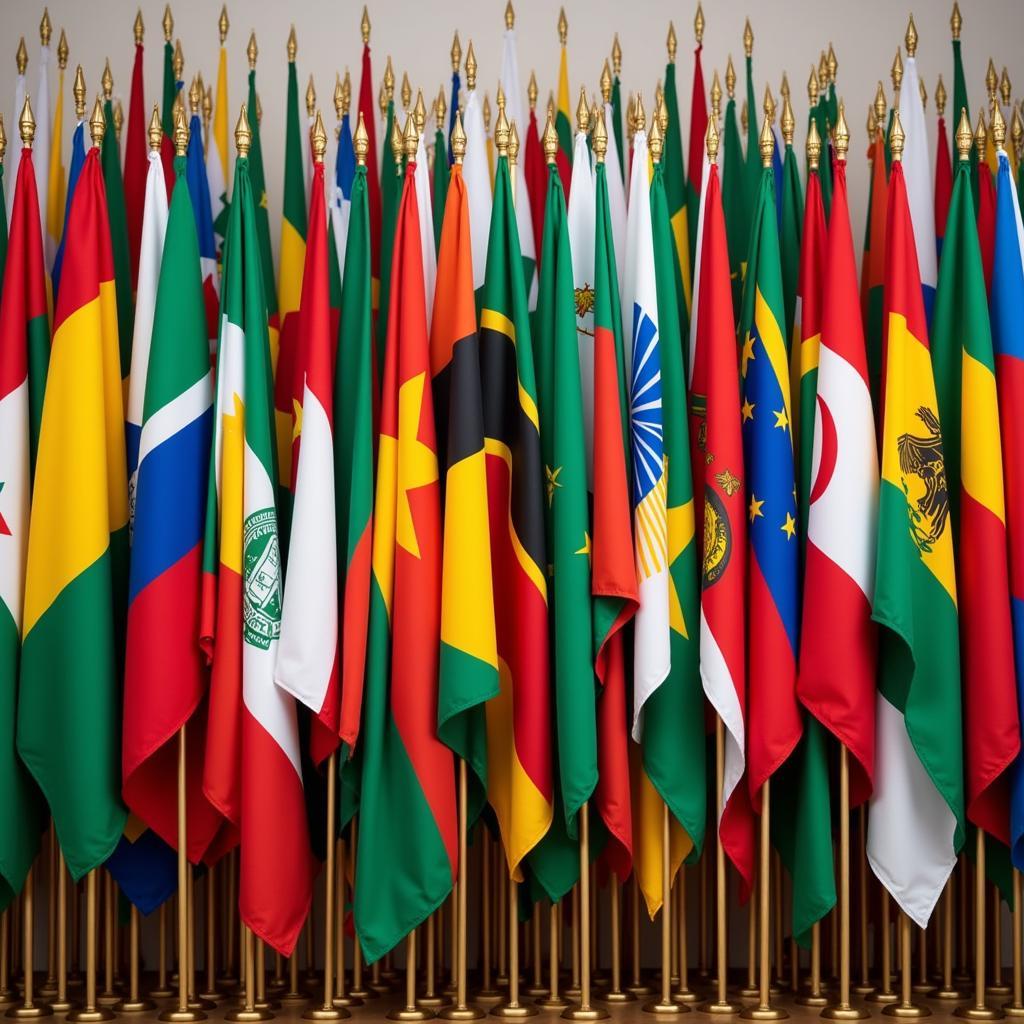Unveiling the Significance: The African Flag in the Post-Colonial Era
The presence of the African Flag In Post-colonial Africa is symbolic of the continent’s journey from colonial rule to independence. It signifies a powerful message of unity, resilience, and the aspiration for self-determination that swept across the continent in the mid-20th century. More than just fabric and color, these flags embody the dreams, struggles, and triumphs of African nations as they forged new identities on the global stage.
A Tapestry of Colors and Symbols: Decoding African Flags
Each African flag tells a unique story. From the vibrant green of Ethiopia’s flag, representing hope and fertility, to the Pan-African colors of red, yellow, and green seen in many flags, signifying the shared struggle for liberation, each element holds deep meaning. african country flags and names often feature symbols of natural resources, cultural heritage, and aspirations for the future. For example, the black star on Ghana’s flag, raised in 1957, became a beacon of hope for other African nations fighting for independence.
 Ghanaian Flag
Ghanaian Flag
Beyond Independence: The African Flag as a Unifying Force
The African flag in post-colonial times has come to represent more than just national identity. It symbolizes the collective spirit of Pan-Africanism, a movement advocating for the solidarity and unity of African people worldwide. This unity is evident in events like the African Cup of Nations, where fans from across the continent rally behind their national teams, draped in their flags, celebrating their shared heritage and passion for the sport.
 Flags of the African Union
Flags of the African Union
Facing the Future: The Evolving Role of the African Flag
Today, the African flag in post-colonial Africa continues to evolve in its meaning. It represents the ongoing challenges and opportunities faced by the continent – from economic development and social progress to environmental sustainability and political stability. The flags are a reminder of the shared responsibility to create a brighter future for all Africans.
The African Flag: A Symbol of Pride and Progress
In conclusion, the African flag in post-colonial Africa is a powerful emblem of the continent’s journey. It encapsulates the struggles, victories, and aspirations of a people determined to forge their own destiny. As Africa continues to rise on the global stage, its flags will continue to fly high, serving as a constant reminder of its rich history, vibrant culture, and unwavering hope for a brighter future.
FAQs
1. What do the colors on the Pan-African flag represent?
The red symbolizes the blood shed for liberation, the yellow represents the continent’s wealth and resources, and the green signifies hope and the land.
2. Why do so many African flags feature a star?
The star often symbolizes freedom, unity, and hope for the future.
3. Are there any African countries that retained elements of their colonial flags after independence?
Some countries, like South Africa, chose to incorporate elements of their colonial past into their new flags as a symbol of reconciliation and moving forward.
4. How are African flags used in everyday life?
African flags are proudly displayed in homes, businesses, schools, and during cultural events and celebrations.
5. Where can I learn more about the history and symbolism of specific African flags?
You can find a wealth of information online and in libraries. African Animals Lesson Plans might offer insights into the cultural significance of animals often depicted on flags.
Need Help?
Contact us at:
- Phone: +255768904061
- Email: kaka.mag@gmail.com
- Address: Mbarali DC Mawindi, Kangaga, Tanzania
Our customer service team is available 24/7 to assist you.

